VIENNA AND BRATISLAVA – part 2 of 2
Day Four – 20th May 2023
This morning it’s hot and sunny as I catch a train to Marchegg, a small town near the Slovakian border but still in Austria. The journey takes less than an hour across flat arable land and from the window I see a female Marsh Harrier quartering the fields. I make a last minute decision to get off one stop before Marchegg, in the village of Breitensee, because the walk to Marchegg Nature Reserve looks slightly shorter and more interesting this way.
The station has a middle-of-nowhere feel and I set off across the fields via dirt tracks. Typical birds of fields and hedgerows are everywhere: Skylarks, Yellowhammers, Kestrels, Starlings, Goldfinches, Swallows, Blackcaps and Chaffinches. The ubiquitous Nightingales are present in good numbers, and I see a few more Red-backed Shrikes and Golden Orioles. New birds are a Lesser Whitethroat singing a short distance away and a flyover Bee-eater, its liquid call alerting me to its presence.
I pass a roadside fishing lake and, through a small gap in the hedge, I see about 15 Black Terns flying lazily back and forth across the water in their fine breeding plumage, disappearing momentarily before reappearing in my limited viewing window. I also see the first of a handful of Sand Lizards scuttling away from the side of the path.
As I approach Marchegg Nature Reserve, the first of many White Storks that I’ll see today drift across the sky. There is at least one soaring overhead at any given moment, and by checking them carefully I also find two Black Storks. The other common birds soaring in the hot air are numerous Red Kites and lesser numbers of Black Kites.


The habitat of the reserve is mostly wet woodland, accessed by a few paths and a raised embankment. Some of the paths are flooded and impassable, due to either beaver activity or to the heavy rain that they’ve had recently. This is the floodplain of the River March, known as the Morava in Slovakia, a tributary of the Danube. The raised embankment is the best route through the woods and, as it’s a Saturday, quite a few locals are out today. One group is being guided on a nature walk and I invite them to watch a White Stork’s nest with four chicks through my scope. There are plenty of stork nests here, either in trees or on buildings. A couple of times I see Tree Sparrows that have made their nests amongst the sticks. In this video, a Tree Sparrow lodger can be seen emerging from the right at about 1 min 35 secs.
Other birds seen are a quickly-glimpsed Icterine Warbler (and another heard only), two fly-by Turtle Doves, two Marsh Tits, a few White Wagtails and Jackdaws, and (remarkably) the only Wren I see on the whole trip. The usual Buzzards, Kestrels, Grey Herons, Mute Swans, Chiffchaffs, Cuckoos, Green and Great Spotted Woodpeckers, Pheasants, Hooded Crows, Nuthatches, Swifts, Blackbirds and Song Thrushes are also present. Two Ravens fly over.
At a wooden viewing platform over a pond I add a heard only Reed Warbler, as well as the usual noisy Edible/Marsh/Pool Frogs (I still can’t ID them properly) and a Grass Snake stalking them through the water and fallen branches. Another amphibian call that I hear is later identified as probably Fire-bellied Toad, which are obviously common here but I don’t see any.
I have great views of a Swallowtail Butterfly and poor views of what I think is a Southern Festoon. There are many other butterflies and a few dragonflies around, but I didn’t bring the appropriate field guides, so they remain mostly unidentified. There is also an abundance of brutal mosquitoes, and I’m glad I remembered to buy DEET spray last minute before leaving home.
The strangest sighting of the day is a Noctule Bat that appears in broad daylight (3.30pm), flies to the top of a metal pole, and clambers inside.
By mid afternoon I have a cold drink at a café and then its time to leave Austria and walk into Slovakia. The River March/Morava forms the border and Slovakia is just over the other side. I always enjoy crossing an international border on foot, but this one is particularly poignant because it’s the location of the former Iron Curtain and, not so long ago, anyone trying to cross here would most likely be shot. I’ve visited this area before, on a birding day trip from Vienna in the summer of 1990. The Iron Curtain had fallen just a few months earlier, so the danger was over, but there was still no way to cross the river and it was exciting to know that this had been the frontier of the Cold War and that the Eastern Bloc was just a few metres away across the water.
These days there is a foot/cycle bridge between Marchegg and Slovakia, funded by the EU, and I hear both German and Slovakian spoken on either side of the border. Families from both countries are cycling back and forth across the bridge in scenes that would have been unthinkable during my lifetime.

I cross the bridge and plan to follow the path in a big loop through the wetlands to the Slovakian village of Zohor, from where trains run hourly to Bratislava. Compared to the well-wooded Austrian side, the landscape here is one of flat, open, wet meadows with extensive grassland and reedbeds, and small areas of open water. I intend to take it slowly to ensure that I’m still here at dusk, hoping to hear, and maybe see, some crakes, rails, and Locustella warblers – my only chance of some bird lifers on this trip.
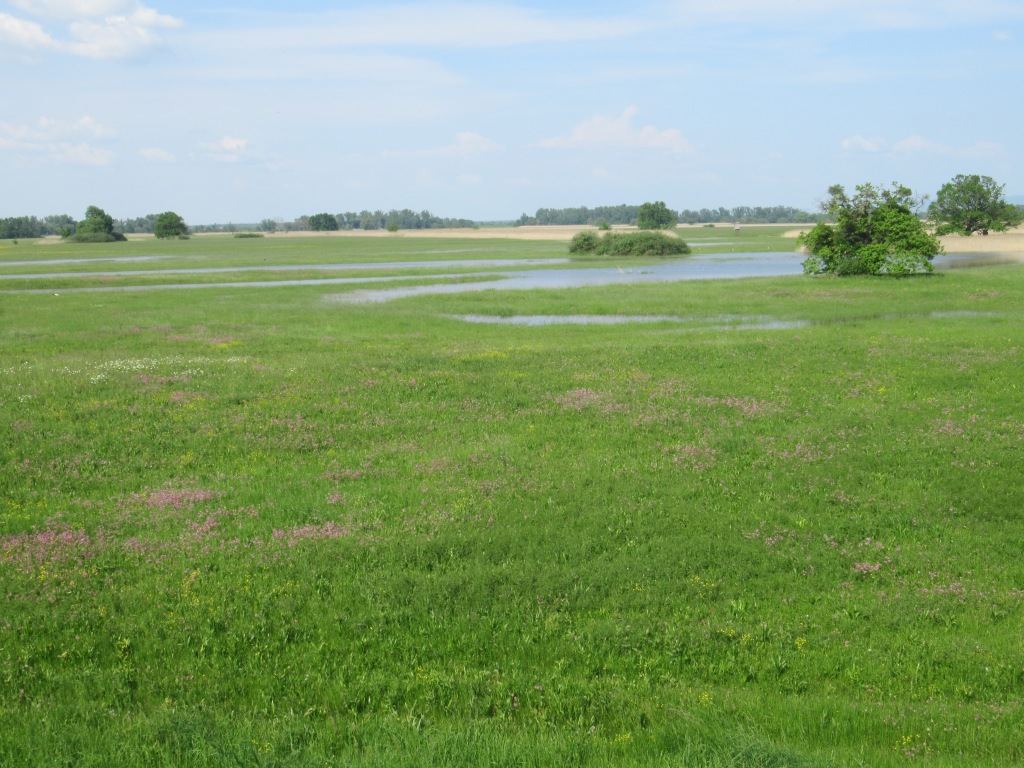
Unfortunately it doesn’t work out that way. Not far along the path I find it flooded with shallow water. I wade through and the water reaches the tops of my boots, wetting my socks only slightly, but I’m impressed by the waterproof quality of my footwear – my feet remain completely dry. I walk through a couple more of these pools, but then I come to a flooded area that gets increasingly deep and stretches ahead out of view. Even the people on bikes are turning back at this point. I consider taking my boots and socks off and just pushing on, but I’ve no idea how deep it’s going to get and for how much further, so I turn back.
Less than an hour after leaving Austria I’m back again. Plan B is to walk to Marchegg station and hopefully catch a train from there. It’s less than 4 km (2.5 miles) but feels a lot longer. I’m hot, tired and hungry by now, and I’m carrying a full backpack. The mosquitoes are still buzzing around, but their numbers gradually drop the further I get from the wetlands.
At the station I’m relieved to see there is a train in 25 minutes and, by a quick change of trains, I get to a station right near my hotel without having to go into the city centre. After checking in, I end the day in a nearby brewery/restaurant for a great meal and a couple of their house beers.
Day Five – 21st May 2023
Another hot day today, and I set out to do some sightseeing. First I catch a bus a short distance out to town to visit Devín Castle, sitting high on a rock overlooking the confluence of the March/Morava and the Danube. The setting is beautiful and the views spectacular.

As well as all the usual common birds, I see male Serins singing in the treetops and manage to identify a couple of butterflies: Queen-of-Spain Fritillary and Brown Argus. More Sand Lizards are scuttling around near the paths.

When I’m ready to leave I notice a tourist ferry boat is about to leave for Bratislava and I find I can pay the fare onboard. It’s a much nicer way to get back than the bus, sailing along the Danube with Slovakia on the port side and Austria to starboard. I add Great Cormorant to the bird list and get good views of the city from the water as we pull in. There are lots of long river cruise boats moored along the bank, some looking very upmarket. This kind of river cruise between cities appeals to me much more than a sea cruise.


After wandering around the historic centre of Bratislava I catch another bus to the suburb of Gerulata to visit the ruins of a Roman fort. This is part of the ‘Danubian Limes’ – a collection of sites that formed the frontier of the Roman Empire and are now combined as a World Heritage Site. At a nearby stream I see more frogs and get poor views of a snake that I think is probably a Dice Snake.
Back in the city centre, I bimble around a bit more. Bratislava is a compact city that is perfect for aimless wandering. The historic centre has beautiful views around every corner and, while obviously touristy, it has a laid-back atmosphere and is far less crowded and hectic than Vienna.
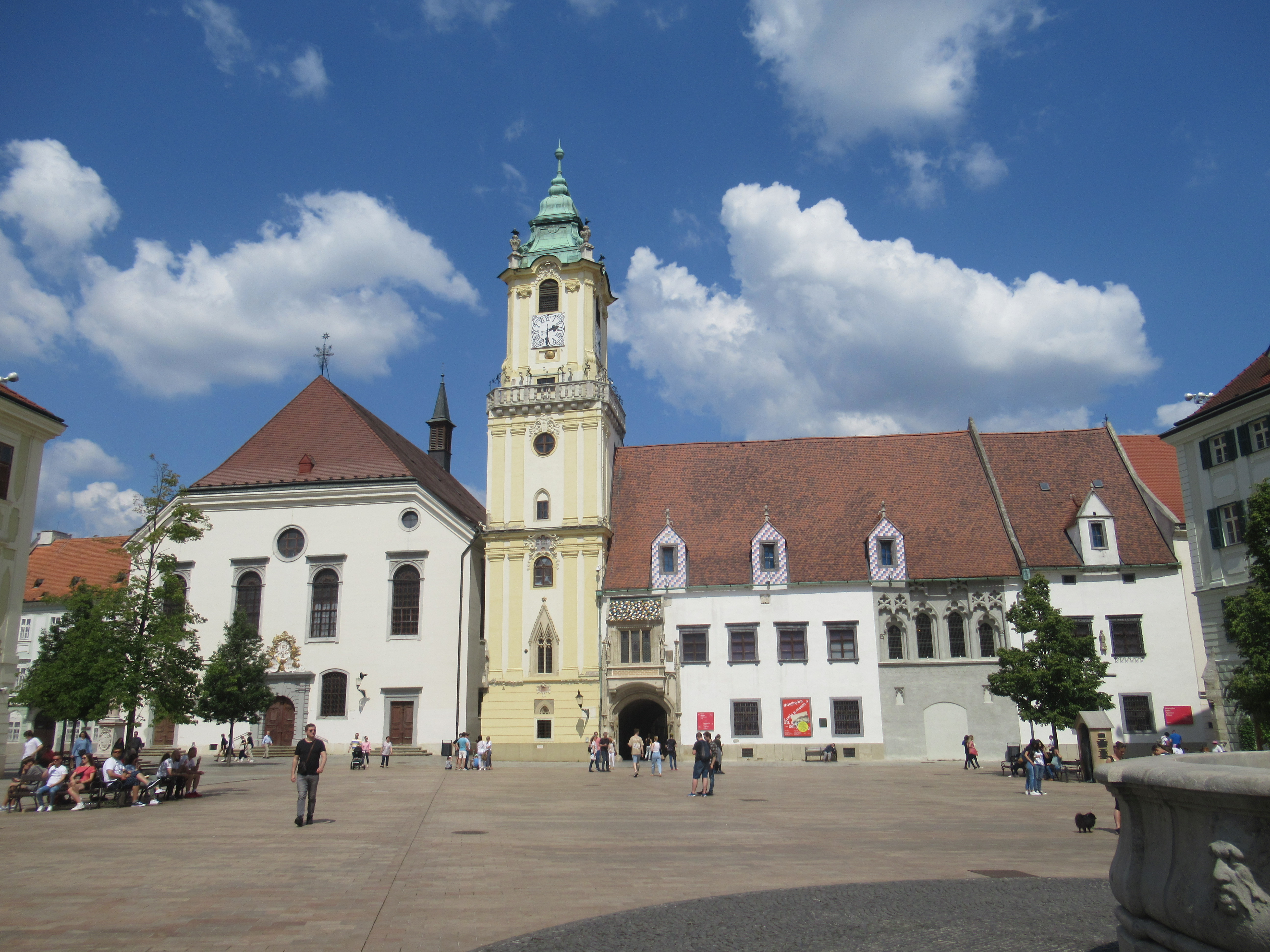
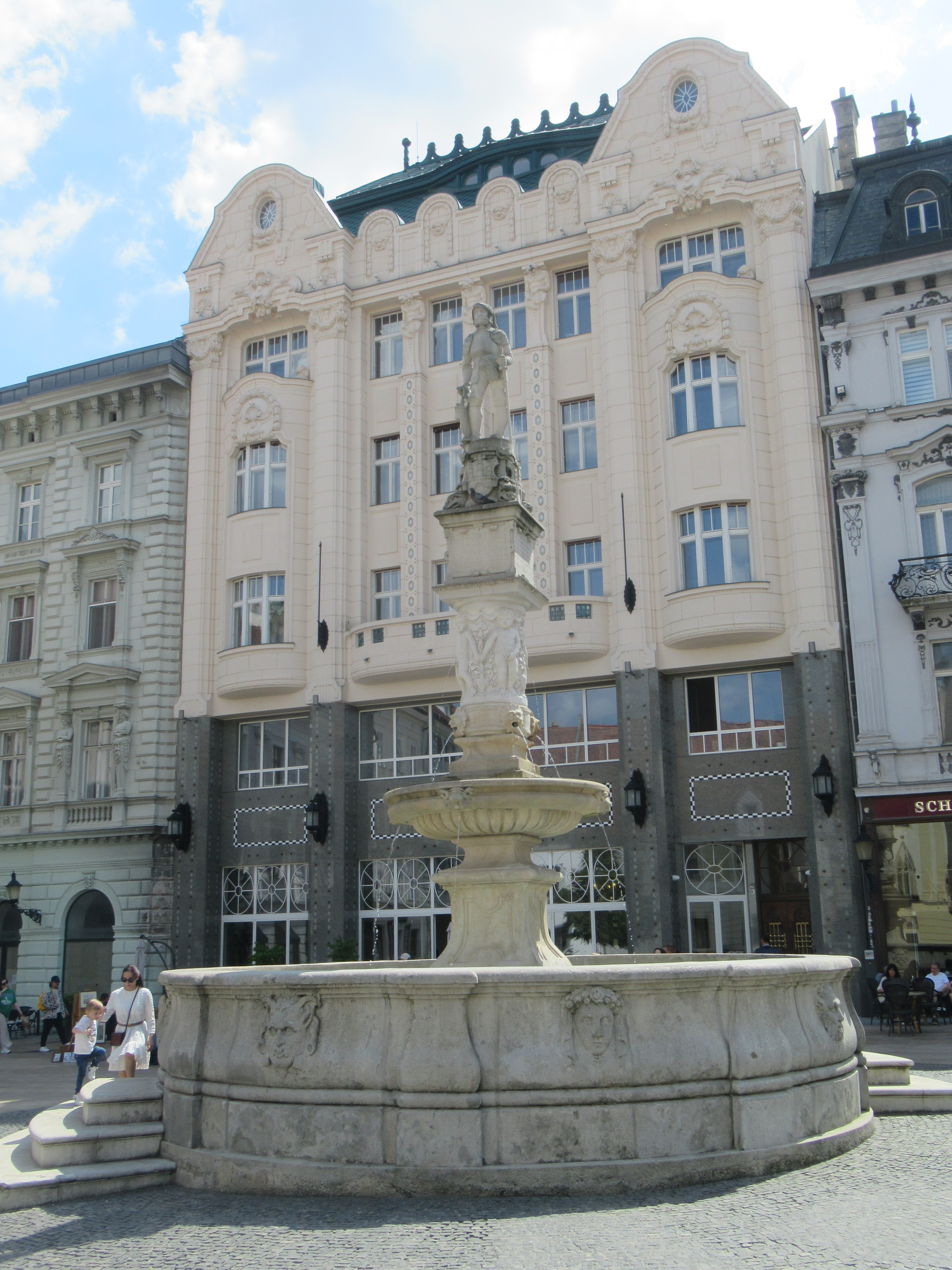



I come across Žil Verne craft beer pub, situated in a shady courtyard off one of the main tourist streets, and sample a couple of their ales, then I have a relaxed three course dinner at Kláštorný Pivovar, another restaurant with its own in-house brewery. The pavement seating area is pleasant enough, but it’s only when I go inside to use the toilet that its full magnificence is revealed. The immediate interior resembles a church crypt, but with a strong (but not unpleasant) smell of hops and fermentation. Continuing further into the building reveals a high-ceilinged restaurant that would put some town halls to shame. Oh, and the food is great and the service is friendly. Recommended.

Day Six – 22nd May 2023
This morning I go out early for a walk in Železná Studnička, some wooded hills not far from the hotel. It starts with a steep uphill walk to where a wooden watch tower gives great views over the city, then past a large radio mast and a (closed) chair lift station. I get my best ever views of a male Black Woodpecker chiselling his way into an ants’ nest in a rotten tree while being mobbed by Great Tits, and I see a Red Squirrel and various common woodland birds including Marsh Tit and Wood Warbler.
After a snack from a kiosk I continue back downhill along a road that has been closed off to vehicles and reserved for cyclists and walkers. The kiosks also sell alcohol and I’m amused to see some locals hiking with plastic cups of beer and wine in hand. Even by my own loose standards, this is way too early in the morning.
At a series of ponds I see three more European Pond Terrapins and another Grass Snake, as well as a Pumpkinseed – an introduced fish from North America – and several large carp.
By early afternoon I’m back in the city centre where I walk sweatily uphill to the castle. I don’t feel like visiting the museum inside today but it’s worth the walk for the views over town and for a look around the grounds.
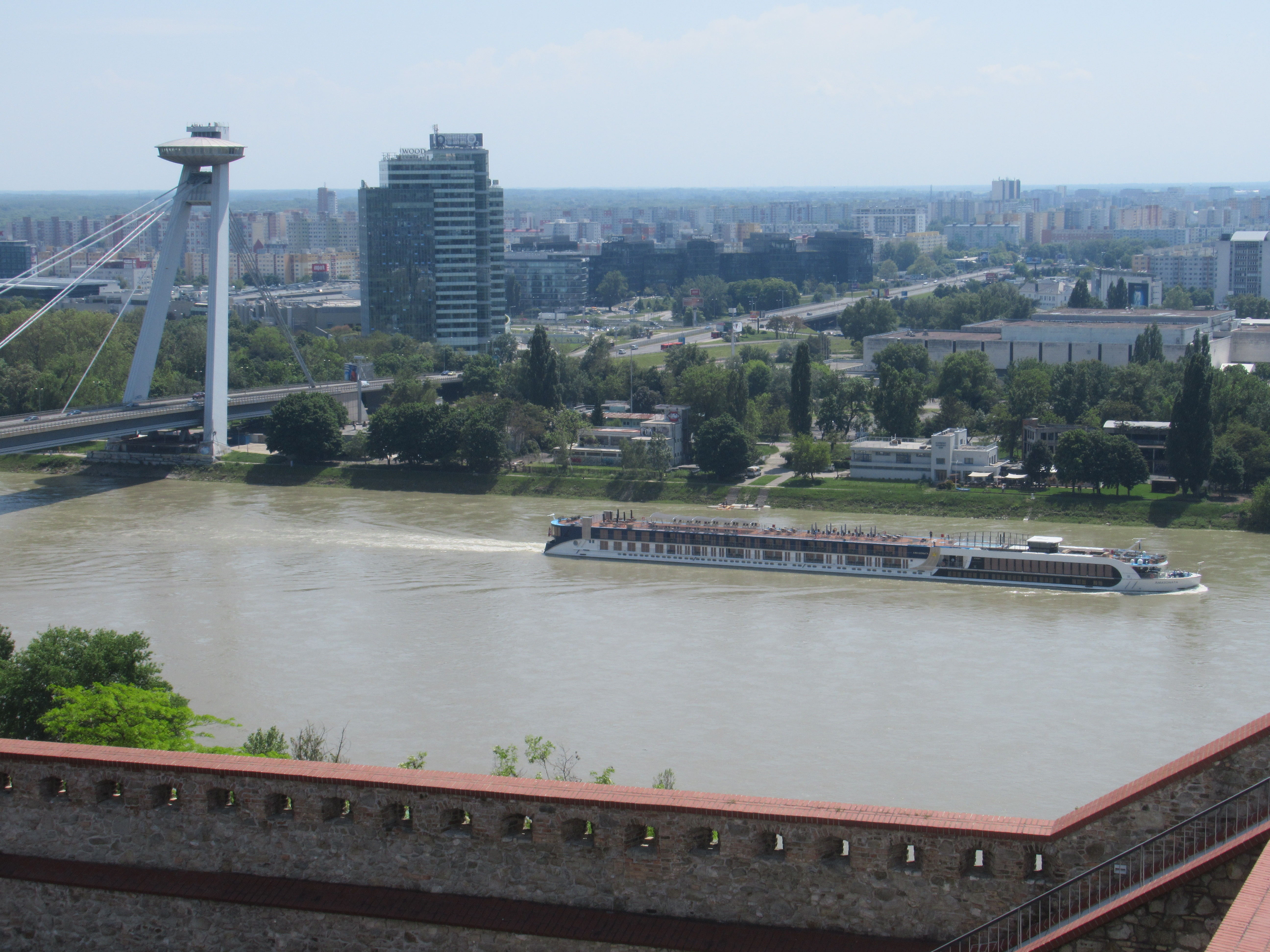


Back at street level I visit St Martin’s Cathedral, The Blue Church, Michael’s Gate, and the Presidential Palace.

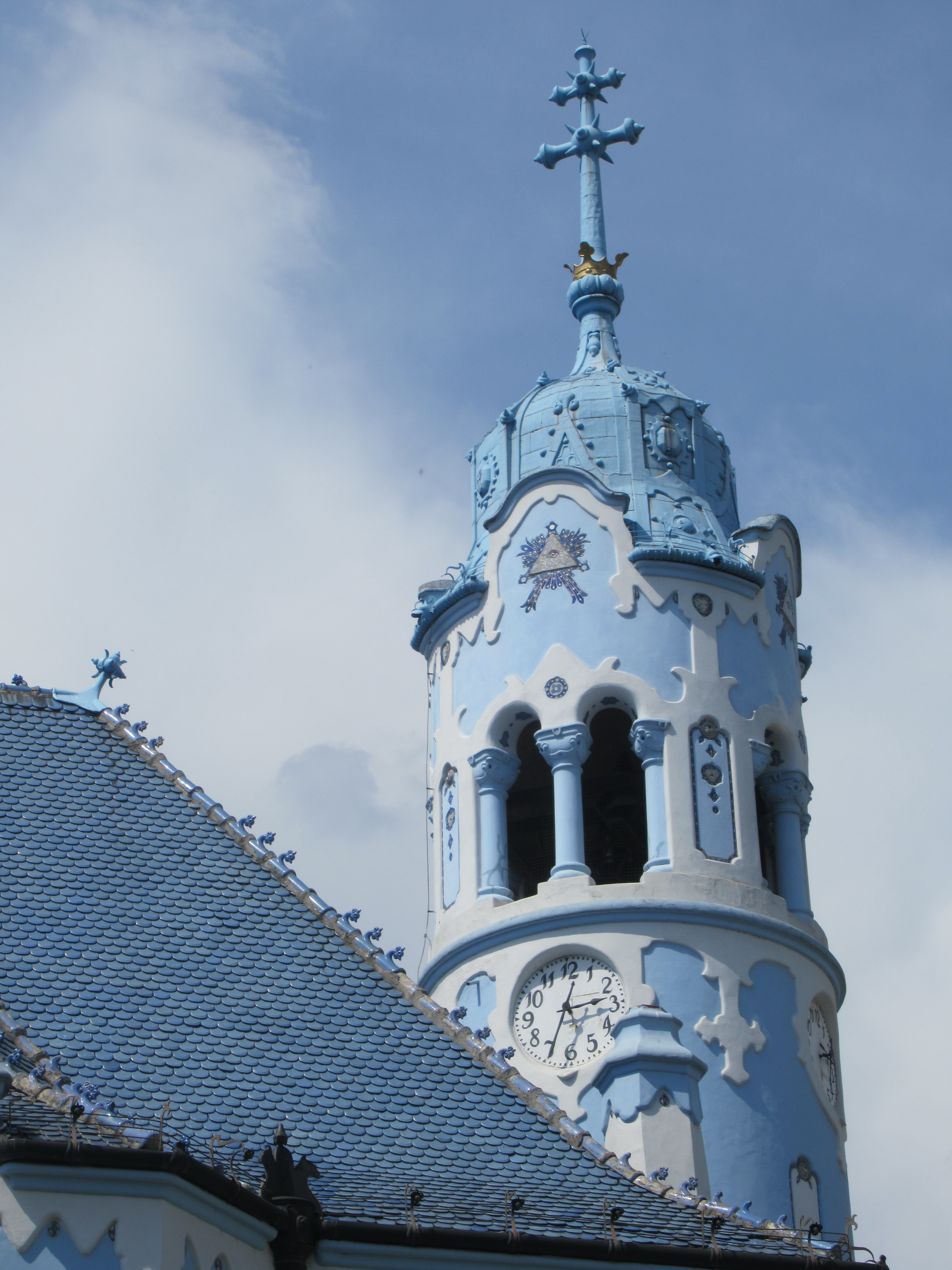

In the late afternoon I catch a train to the village of Zohor. This was my intended destination a couple of days ago when I failed to walk there from Marchegg. I’m going to see if I can approach the wetlands from the other direction for some evening birding.
Once out of the village it’s a fairly unpleasant walk along a busy road (I realise later that I could have caught a bus), and when I get closer to the wetlands I find the way blocked by an industrial unit with high fences, so I have to turn back. Fate seems determined to keep me out of these wetlands, that ebird informs me are full of tick potential.
There are some large flooded areas on the ploughed fields and these hold two Little Ringed Plovers, four Greylag Geese, 20+ Yellow-legged Gulls, 17 Black-headed Gulls, and five White Storks, including two on nests. I find a more pleasant way to walk back to the station along the embankment of a drainage cut. The landscape here looks remarkably like the Cambridgeshire Fens with which I’m familiar. Just as I think I’ve wasted my evening by coming out here, this happens:
I’m crossing a drainage ditch on a concrete bridge when an almighty splash alerts me to the presence of a European Beaver. Just as I’m kicking myself for not being alert enough to spot it on the bank, and thinking I’ve missed my chance, I see it swimming under the water, looking a bit like a small Manatee. It goes under the bridge and surfaces on the other side. It shows amazingly well, does a tail slap, and even comes out onto the bank. It eventually swims off along the ditch and is lost to view in the main channel.
A few paces further along I see another beaver out on the bank:
I’m elated at getting such good views, and at getting it all on film. On the way back to the village a Cuckoo lands on the path in front of me and three Turtle Doves fly past. A few Banded Demoiselles are the only dragonfly species I recognise, and I later ID a Latticed Heath Moth from some terrible record shots.
Day Seven – 23rd May 2023
This is my last day and I catch a coach for the one hour journey back to Vienna. Bratislava bus station sits under a large road bridge, the underside of which houses a decent House Martin colony. Some of the nests are in nest boxes, presumably affixed by an enlightened city council or local environmental group.
Back in Vienna, I leave my backpack in a luggage locker and buy a 24hr travel pass. I then take two trains and a tram to Blumengärten Hirschstetten, out in the suburbs north of the Danube. This park is part botanic gardens, part small animal zoo, and the best-known location for seeing European Souliks. I enter near a goat enclosure and immediately see a number of sousliks running around, giving high pitched vocalisations, and occasionally fighting one another. They are mostly in the enclosure, but they enter and leave at will, one even running between my feet in a hurry to get back to its burrow.
I have a walk around the park but most of the sousliks are to be found in the area near the goats and a nearby cottage garden. The small zoo has a strange assortment of exhibits – tropical greenhouses with a couple of Bali Starlings flying around, ponds of locally common amphibians walled in to stop them escaping, cages of no-show nocturnal mammals and owls that may or may not actually exist. An aviary full of Bearded Tits, anyone?
Most intriguing of all is an enclosure of captive sousliks that surely casts some doubt on the origins of these ‘wild’ rodents. On the other hand, we are near the edge of the city and there is some arable land between 500m and 1km of here, so maybe they were here before the park was established. Either way, I’m glad I saw one out in the ‘wilderness’ of a vineyard to preserve the sacred purity of my life list 😉.
By the time I head for the exit, all the school groups have gone home and it is much quieter. There are now far more sousliks running around, and I count at least 40 just in the area around the goat paddocks. I find that if I sit quietly on the grass these inquisitive little creatures immediately come over to check me out. When I waggle some leaves at them they come over to investigate, but don’t take them. I have more luck with a slice of carrot.
Obviously I don’t condone hand feeding wild animals, but the carrots are scattered around for the goats and chickens, and the sousliks are eating them anyway.
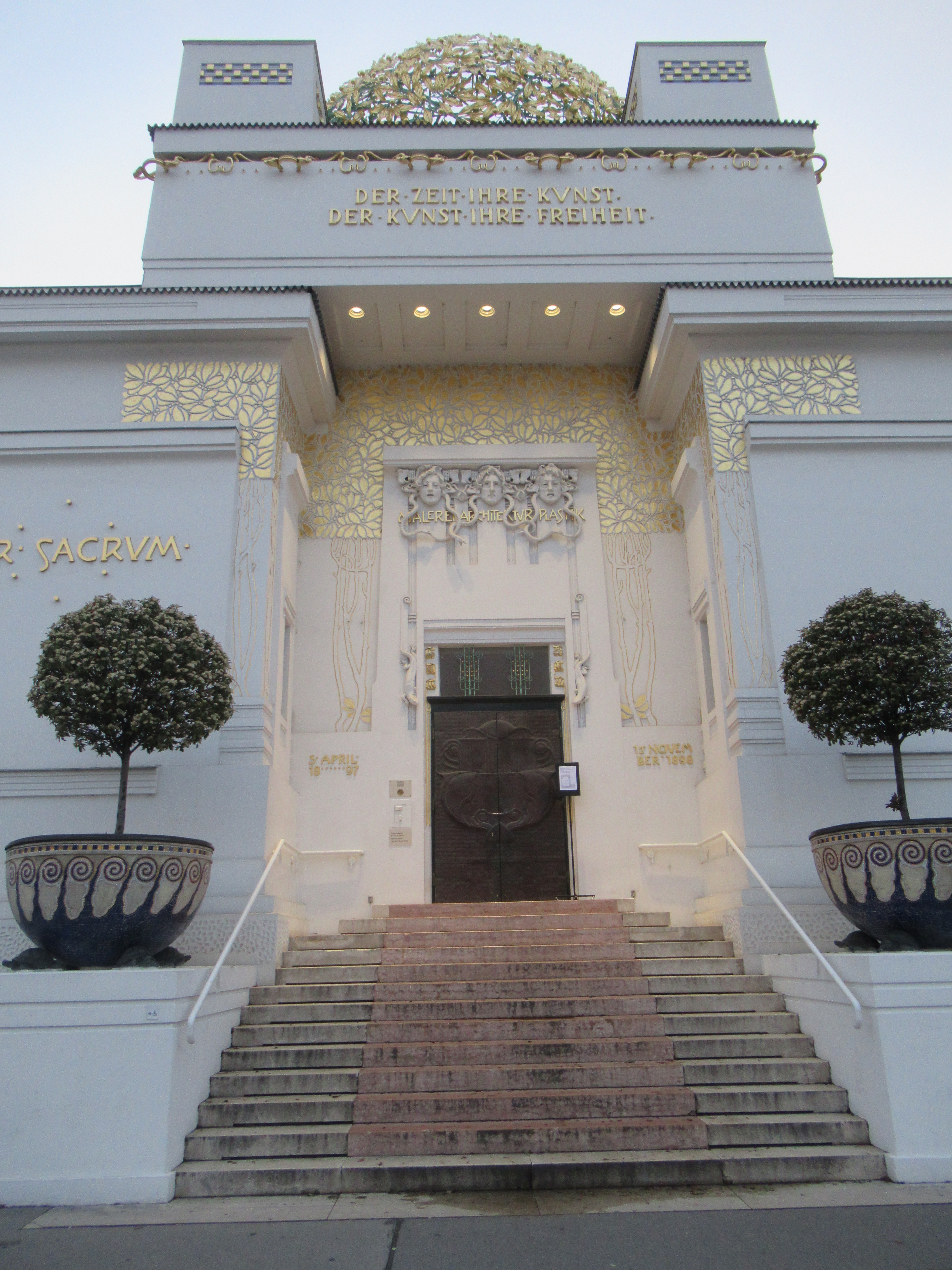
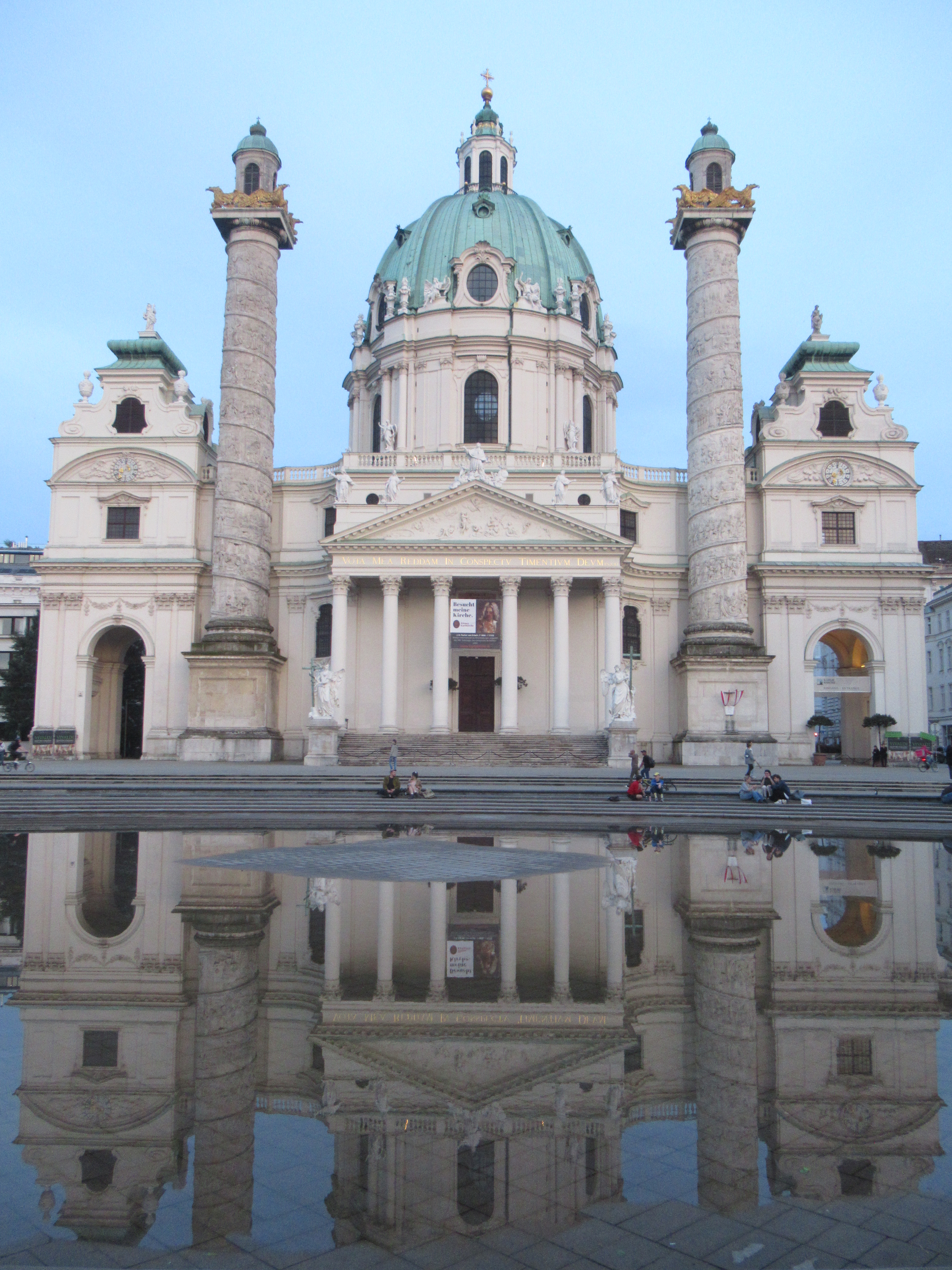
By the time I leave and catch a tram it has started raining, just like my first day here. I have to be at the airport in a few hours for an early morning flight, so I try to pack all the touristy stuff into my last few hours in Vienna. Later I’ll have schnitzel and beer for dinner at Naschmarkt – almost a mile (1.5 km) of market stalls and eateries, but before then I head to the Prater park for a ride on the Wiener Riesenrad, Vienna’s famous Ferris wheel, built in 1897 and featured in The Third Man – basically a bunch of garden sheds bolted onto one of the World’s greatest Meccano projects. The views are spectacular, the presence of Orson Welles is almost palpable and, as with many European tourist attractions, it’s accompanied by the sound of four teenage girls wittering slightly too loudly and excitedly about everything apart from the actual thing that they are currently experiencing.



After enjoying this famous film location, what better way to spend a rainy evening in Vienna than to see the film itself. The Burg Kino is a lovely old cinema that has been showing films since 1912 and screens The Third Man a couple of times a week. I buy a ticket and then have time for coffee and a slice of Sachertorte (Vienna’s signature cake) in one of the city’s historic cafés (Aïda – business established in 1913).
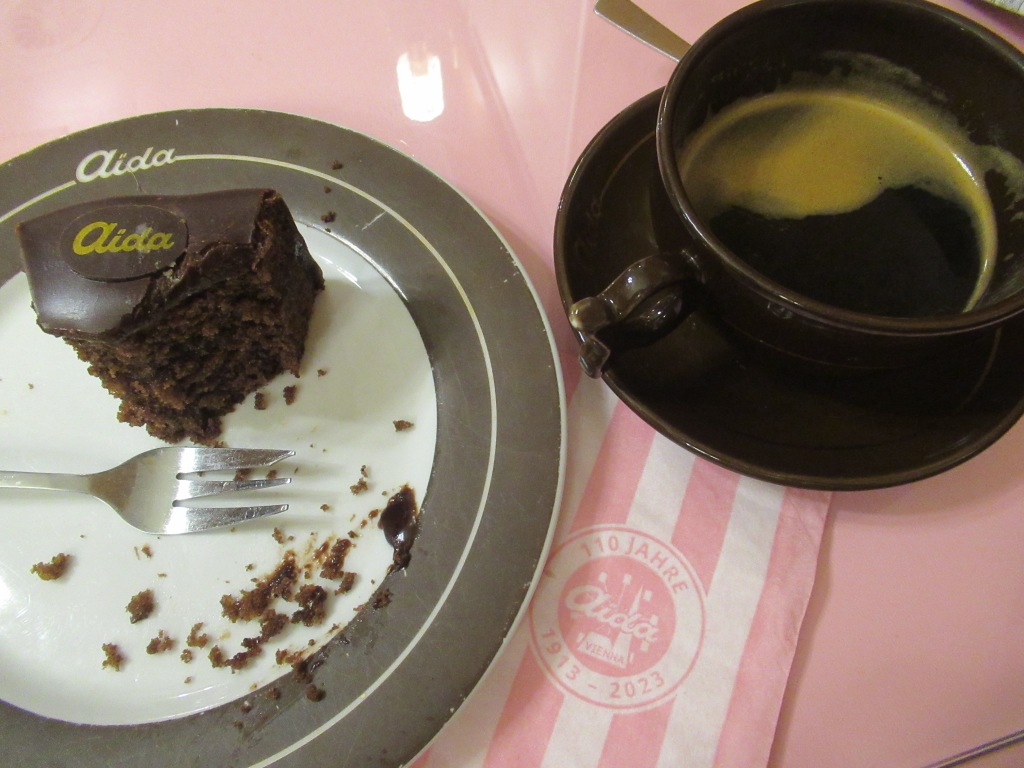
Of course I’ve seen this film before, but it’s much more enjoyable on a big screen in the city with which it is so inextricably linked. I thought I would be the only one here, but there are almost two dozen others, so hopefully it will remain financially viable for its continued screening for many years to come.
A couple of key scenes are filmed in the Central Cemetery but, try as I might, I don’t see any hamsters. Perhaps it’s time for an updated remake.
Acknowledgements
I used this website for information on finding European Sousliks:
Accommodation
In Bratislava I stayed at the Hotel Maxine… uh… I mean the Hotel Max Inn which, just like in Vienna, was a little way from the centre but close to a train station and a bus stop with a very short (four stops) bus ride into town. The cost was £126 (€142) for three nights, including city tax, and I was really impressed by what I got for the price. The room was excellent – very quiet, clean and comfortable, with bath, shower, fridge and TV. The staff were really friendly and helpful, and a great buffet breakfast was available for €9. A couple of restaurants and a gas station shop were available nearby.
Transport
Just like Vienna, Bratislava also has a city pass valid for a 24, 48 or 72 hours, but its main purpose is to give discounted entry to tourist attractions, with all transport included as a secondary feature. This is great if you’re spending a couple of days packing in all the cultural attractions, but if you’re one of those weirdos who likes to spend all your time outside looking at wildlife, then it isn’t very good value and it’s better (and cheaper) to buy a handful of travel tickets from a machine or your hotel reception, and validate one for each journey you make. The cheapest ticket costs €0.90 and is valid in two zones for up to 30 minutes, on any form of transport. This is more than enough for any journey within Bratislava – my bus from hotel to city centre took about 10 minutes.
Food
I loved the food in Slovakia and, unlike in hectic Vienna, I actually found the time to sit down for proper meals. Amongst my favourites were the delicious Domáca kapustnica so smotanou, klobáskou a údeným mäskom, the scrumptious Bryndzové halušky so slaninkou, and of course, the mouth-watering Sviečková na smotane s brusnicami, žemľová knedľa, all of which I ordered in impeccably pronounced Slovak… and if you believe that I’ve got a bridge over an Iron Curtain to sell you.
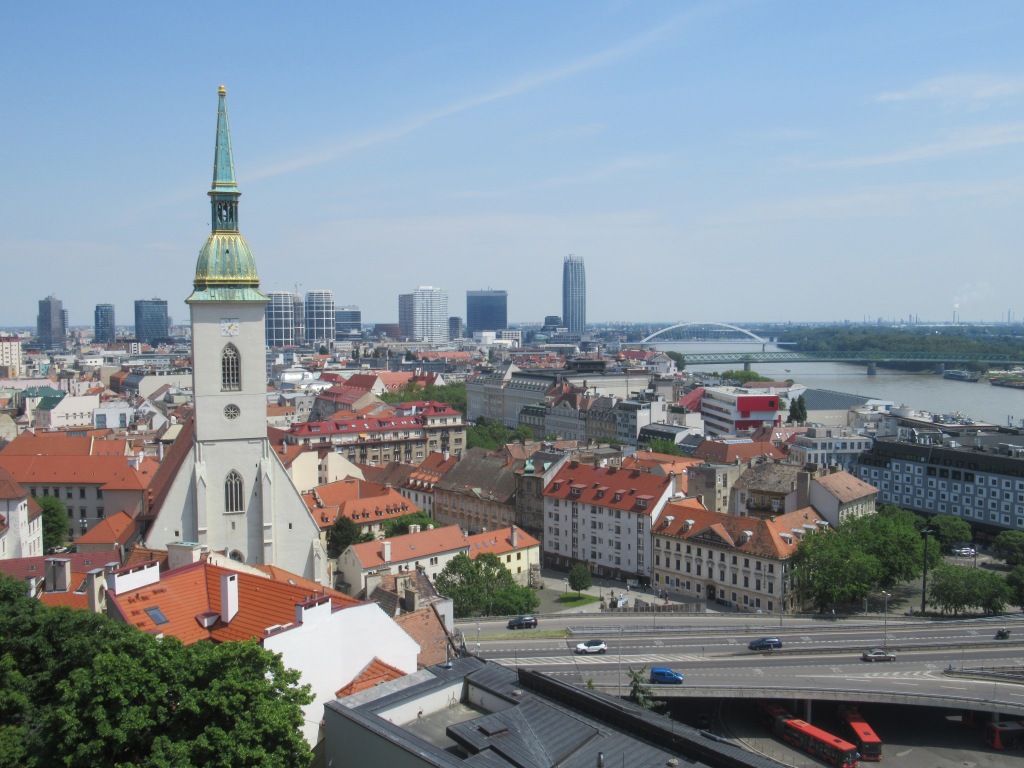
Leave a comment